of smartagrihubs
The magnitude
155+
Digital Inovation Hubs
9
Regional
Clusters
5
Sectors
28
Flagship
Innovation
Experiments
Flagship Innovation Experiments
In the spotlight
Farm Sustainability Audit
Identifying key sustainability metrics to develop and implement a sustainability audit for dairy farmers and sharing the gathered data with consumers.
Ireland & UK
AgriFarmLab
AgriFarmLab is a network that creates a link between innovators and farmers.
france
DIG-ITfarm
Using precision farming data collection to predict early stage diseases in order to lower the use of antibiotics in swine rearing and disseminating the best-practices.
north-west europe
E-services Utilising Drones for Quantity Buyer
Developing business strategies and testing drone mapping to catalyse the wide adoption of drone-based e-services.
north-east europe
Digitising the Dairy Production Chain
Digitalising steps of the early dairy production chain to improve forage production, feed mixture and management, stable operations and resource effiency.
Iberia







Farm Sustainability Audit -
Key sustainability metrics and benchmarking at a farm and at national level
The number of people living on the planet is ever-increasing. To keep up with the demand for food, the Irish dairy industry is focused on intensification and expansion. Due to the threat of climate change this intensification and expansion cannot happen at the cost of our environment. Metrics which can facilitate and guide sustainable expansion need to be developed to ensure that intensification does not have a negative impact on the animal, the farmer or the environment.
The overall goal of our Flagship Innovation Experiment is to identify key sustainability metrics and to facilitate benchmarking and the improvement of sustainability at the farm and national level. The combination of on-farm sensors, existing farm data, internationally recognized models, integrated databases and various key players in Irish agriculture will facilitate quantification of sustainability metrics and future deployment of benchmarking methodologies.
It is reported that agriculture is responsible for a third of the GHG emitted from Ireland. Our solution aims to help reduce this figure while increasing the dairy herd output. On a farm level, our solution will install sensors to measure the electricity and water usage of specific farm activities. This will allow farmers to monitor different processes and identify methods of reducing inputs and thereby increase profits.
In this project, data comes from several different sources. Water and energy metres work in the same way as they do in your home. The data is then sent to the cloud through an on-farm WiFi connection. Other forms of data which are already recorded and stored by third parties will also be collated, these include animal data (births, deaths and sales/purchase), quantity and quality of milk produced, inputs used (e.g., fertiliser and concentrates) and herd health data. All this data gets combined and fed into models which will calculate the sustainability of each farm.
Our Flagship Innovation Experiment brings a couple of products and solutions to the market. Currently, farmers can opt into certain government sanctioned schemes to be financially rewarded for operating their farm in an environmentally friendly way. This Flagship Innovation Experiment will identify key sustainability metrics which can be collected autonomously. This infrastructure will facilitate the implementation of a new scheme whereby farmers can get financially rewarded for farming in a sustainable manner. In turn this will reduce the overall GHG emissions from the dairy sector in Ireland.
Of course, no day is completely the same, but we also have typical days in our project. As there are several participants in this Flagship Innovation Experiment, much of the work involves communicating with each party to ensure everyone has what they need to complete their work and that the project is progressing as expected. In order to get data from the farmer and into a database, people with expertise in agriculture, sensor development, programming, database management, data analytics and project co-ordination are required. Regular meetings are held to discuss progress and possible areas of improvement.
We work together with Digital Innovation Hubs and Competence Centers. A key aspect of this Flagship Innovation Experiment is that the data flows autonomously from the farm to a centralised database. One of our Competence Centres oversees creating and maintaining a centralized database where all the various data streams can be stored. This allows other partners in the project to analyse the data as a whole and quantify proper sustainability metrics.
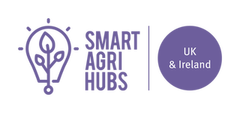

Regional Cluster
Ireland & UK
Sector
Livestock
End user
Dairy farmers
Product
All relevant farm data gets recorded, stored and combined and fed into models which will calculate the sustainability of each farm.
Contact
Tom Byrne
Partners
Waterford Institute of Technology in Ireland
Teagasc – Agriculture and Food Development Authority in Ireland / British Isles
Code Plus Ltd in Ireland
Ingenera Sa in Switzerland
Irish Cattle Breeding Federation Society Ltd in Ireland
Energy Monitoring Ireland Ltd in Ireland
Something funny/interesting
While we all work in the office in Cork Monday to Friday, at the weekends we all enjoy working on farms.
AgriFarmLab - Connecting innovators and farmers
Innovation must be linked with the field reality. It takes a market; it takes a need and understanding of the needs for an idea to become a solution. That is why we want to create links between innovators (SMEs, start-ups etcetera) and farmers.
AgriFarmLab is a network that creates a link between innovators and farmers. Thanks to the networks of the partners involved in the project (Regional Chamber of Agriculture, CEA Tech, Vegepolys Valley, Images & Réseaux and Inf’Agri 85), we bring technical support to the SMEs, the start-ups and others. We also bring them in touch with volunteer-farmers who want to be involved in the development process.
After years of development, using public funds and human resources, a new solution is realised on the market. The creators of this solution hope that farmers will take ownership of it. However, if farmers have not been involved in the development process, there is no evidence at all that this will happen. Sometimes those new solutions fail in meeting their market. As a network, the way our technology works is simple, even for dummies. We know people, work together and make sure people meet each other and work together too.
We have selected 5 start-ups through a call for application for our product:
Advansee: an insect trap that determines automatically which species are trapped and the threat they represent;
Aptimiz: captor of position that determines and analyses the time you spend on each task of your farm;
Baoba: software that helps the farmer dealing with all types of grazing on his farm;
MyBacchus: connected captor to analyse the vinification process and certify the wine traceability;
MobbiProtec: connected camera to allow farmers to watch temporary or far-settled sites.
Wondering what a typical day at our Flagship Innovation Experiment looks like? It depends on the SMEs you’re having your day with (there are 5 SMEs selected for Agri FarmLab in SmartAgriHubs, elected by a jury composed by farmers, after a call for application). For example, some will organize a meeting with a dozen of farmers, to present them their idea and discuss their needs: what in the SME’s project is relevant according to the farmers? What should be modified, or added?
Others are already testing their solution in the field, a typical day with them would consist in going along with them to see the results, both the functioning and the using of the solution.

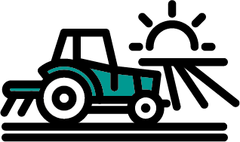
Regional Cluster
france
Sector
Arable
End user
Start-ups
Product
Network for start-ups
Contact
Vincent DUFAU
Partners
Inf’Agri85
Advansee
Aptimiz
My Bacchus
Open Business Agriculture
Tekxia
Vegepolys Valley
Images & Réseaux
CEA Tech
Chambre d’Agriculture Pays de la Loire
Something funny/interesting
Our Flagship Innovation Experiment is finally a miniature version of SmartAgriHubs, for we try to implement an ecosystem of innovation in the Pays de la Loire Region, by creating links and allowing people to know each other and work together. Since a couple of months, we also try to determine how we will finance Agri FarmLab out of SmartAgriHubs, to make sure it will last after 2021..
DIG-ITfarm - Farming data collection for lowering the use of antibiotics
Since animal production becomes more and more intensive in order to provide enough protein for human nutrition, livestock is getting more susceptible to diseases. These diseases are today still cured by use of antibiotics. Since the occurrence of antimicrobial cross resistance by use of antibiotics increases significantly the last years, prudent use of antibiotics or other functional feed ingredients is needed in order to safeguard future human health. Technology can support in that.
It is estimated that between 2010 and 2030, the global consumption of antimicrobials will increase by 67%, from 63,2 ± 1,56 tons to 105,6 ± 3,61 tons. This rise is likely to be driven by the growth in consumer demand for livestock products in middle-income countries and a shift to large-scale farms where antimicrobials are used routinely. These findings call for initiatives to preserve antibiotic effectiveness. In general, it is considered that reduction of the use of antibiotics and responsible antibiotic use will result in a decrease of the occurrence of antimicrobial resistance.
All partners within Flagship Innovation Experiment 12 were actively involved in previous initiatives, such as the national project LESSantibiotics and European project EU-PLF, that already demonstrated the lowering of antibiotic use by selective early detection of diseases in animals within stables, enables to maintain the production numbers of the farms. In Belgium, sound-based technology in pig farming could detect upcoming health problems up to 10 days before any visual detection of the diseases.
As with humans, diseased animals also show changes in behaviour, have a fever and encounter problems with respiration. The technology applied in Flagship Innovation Experiment 12 is designed to recognise these changes. For example, the cough monitor (from partner SoundTalks) recognises suspicious sounds of pigs, while the Chicken Boy (from partner Syntesa) recognises changes in body temperature and behaviour. Comparing the data with normal herds or flocks, they can early predict where and when to use medication of other functional feed ingredients.
Flagship Innovation Experiment 12 has a portfolio of hardware platforms with corresponding unique algorithms available to detect upcoming problems in livestock production. Today, this portfolio is highly developed for pigs and poultry. Veterinarians and other farm actors can protect better their livestock against diseases and intervene in a responsible way. This results in more proud farming and gives more assurance to farmers to cope with animal health and welfare. This results in more inclusive farming approaches, together with consumers and citizens.
A typical day in our project looks like the following. For example, in the pig trial, the farmers inspect the barn every day, and link their personal observations – based on decades of professional experience – on the technology dashboard. Most of the time these observations are in line with their expectations, however sometimes the dashboard warns them for a potential problem they did not observe. This dashboard gives the farmer confidence that they can predict upcoming problems by means of technology and treat the barns very selective based on the warnings of the technology. And because the disease is not fully elaborated yet, the farmer can treat the animals with lower doses of antibiotics or even with substitutes of antibiotics, such as organic acids, plant extract or herbs.
Of course, we work together on our project with our Digital Innovation Hub and Competence Centre. The Digital Innovation Hub and Competence Centre advised on how to further demonstrate and disseminate the outcomes of the flagships to a broader audience. This way, they contribute to the demonstration days and give the possibility to showcase technologies at different events, including social media platforms. This already resulted in interests from parties in countries within Europe, such as Spain and Turkey, and outside Europe, like Saudi Arabia and South Africa.
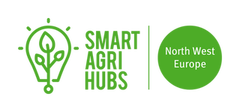

Regional Cluster
North-West Europe
Sector
Livestock
End user
Farmers and veterinarians
Product
Hardware platforms with corresponding unique algorithms available to detect upcoming problems in livestock production.
Contact
Geert Bruggeman
Geert.Bruggeman@nutrition-sciences.com
Partners
Nutrition Sciences in Belgium
Soundtalks NV in Belgium
Syntesa Partners and Associates Sl in Spain
Smart Digital Farming in Belgium
Eigen Vermogen van het Instituut voor Landbouw en Visserijonderzoek in Belgium
Something funny/interesting
All partners are in their comfort zone, but all comfort zones are very complementary. This results in a match between technology experts and commercial experts. So, also different speeds of implementation of flagships. The one may live in yesterday, but the other in tomorrow. There is never a today, while the work must be done now. And it is – as expected - proven during the project that only food, drinks and humour can solve this problem.
E-services Utilising Drones for Quantity Buyer
The main chalanges in farms relate to performing correct and precise monitoring of fields during vegetation, field damages, quick plants revision or performing treatments in high plants. Farmers are looking for new technologies and solutions for their production. One of these are drones. But existing services are available mainly for the biggest farms and are difficult to understand, especially their results. There are many companies on the market that offer services using drones in agriculture, 89% of them only offer photos and maps.
This Flagship Innovation Experiment will run and implement an e-services advisory system for agriculture with the use of drones. It will consist of four services, especially tailored to small and medium-sized farms.
Drones can be used for many things, they can assess plant and field damage, but they can also perform treatments. In this FIE we combine the technology with consulting and provide recommendations and advice. Our services are available via the internet on the web and via mobile applications. The consulting services are planned for both individuals and groups, and also for small and large farms.
To give you an example of how are technology is used: One of the farmers that is involved in project, has 160,000 bushes of blueberry. The farmer wants to have information about the condition of each of them. Such information can be obtained by using drones on a single flight in just 1 day. The farmer himself would have to walk 80 kilometres which would take him about 4 days!
So to explain it in simple terms, the drones can determine the greenness of plants, i.e. the intensity of photosynthesis. This allows it to determine the needs of plants in nutrients. It is particularly useful in farms because of the large areas. In addition, drones can carry various loads, for example, useful insects to destroy pests.
For us a typical day in the office consists of analysing available photos. Finding details on the NDVI images and comparing them with images in visible light. What’s more, there is a strong emphasis on developing software for advisors and farmers to communicate in the context of the services process.
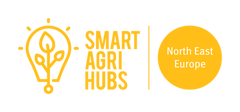

Regional Cluster
North East Europe
Sector
Arable
End user
Small to medium arable farms.
Product
The experiment will create 4 advisory services with drone usage for farmers, both large and small farms, available through web and mobile applications.
Contact
Maciej Zacharczuk
maciej.zacharczuk@wodr.poznan.pl
https://www.facebook.com/Wielkopolski-O%C5%9Brodek-Doradztwa-Rolniczego-w-Poznaniu-439506569424492/
Partners
Cybernetic Technologies NETICTECH Spolka Akcyjna
District Chemical and Agricultural Station in Poznań
Agriculture Digital Innovation Hub Poland
Wielkopolska Agricultural Advisory Centre Poznan
Something funny/interesting
Tablets with android are better than iOS. Our iOS has problems cooperating with the drones!
Digitising the Dairy Production Chain
Smaller dairy farms face more difficulties than larger farms when it comes to staying competitive in the dairy market. Starting from a local condition (the average size of a dairy farm in Galicia is small compared to Northern European standards), we focus on providing a range of technology-aided tools that are suitable for smaller farmers (whether in Galicia, Italy or Poland) to increase their business sustainability through resource optimization, environmental compliance, improved profitability and quality of life at the farm.
Our Flagship Innovation Experiment works on a combination of solutions that, together, allow small or mid-sized farms to improve milk quality, production efficiency and sustainability across the dairy production chain. We are working on the combination of multispectral images with sensors to predict feed crop performance, quality and detect stress situations. Besides, we are looking into the optimization of cattle diets to achieve greater efficiency in milk production. A robotic prototype will be developed for remote monitoring of barns, and an ERP-type software will simplify much of the technical-economic management and decisions at farm level.
Currently, small farmers are not aware, nor using much of the valuable data generated during the dairy production process. The aim is to improve the efficiency in the use of resources through the adequate exploitation of the available data throughout the dairy production cycle in all its stages. By this, we are contributing to a better performance, a greater sustainability of the process and an improvement in the intake of decisions of the farmer or the technical advisor.
The technology of our project works as follows. The multispectral images collected by a drone or satellite allow to predict the production, quality of the harvest or stress situations, due to the algorithms obtained from the data of environmental, soil and aerial sensors. A mixer car optimizes food mixes and integrates multiple farm data, while a robot monitors all process parameters. All this technical-economic information is shown in a single device for making the most efficient and profitable decisions.
Our end-users are mainly small or mid-sized farmers and their technical advisors. The application of disruptive technologies in this sector has made it possible to consider all stages of the production chain: fodder cultivation and harvesting, processing of raw materials, precision feeding, obtaining milk and its quality. In this way the value chain becomes more efficient and more profitable both in the practice and in terms of technical-economic information and production costs.
A typical day in our project looks like the following. Various crops are continuously monitored with environmental sensors, soil sensors, etcetera. Different parameters are measured periodically in the plants and samples are analysed in our laboratories at key moments of growth and harvest. Throughout the different periods of these phases we fly drones to collect multispectral images and correlate them with the rest of our data to produce predictive algorithms of each crop, both in small plot trials and in large plot crops. The feed is processed with an adjustable mixing cart. The optimization of the fibre size is sought to achieve the highest digestibility and finally to be able to correlate it with the quality of the milk. In parallel, we work on the design and assembly of a robot that will allow us to monitor all the measurable parameters in the barn, and in a software tool that allows integrating all the technical and economic information of the operation in an automated manner.
CIAM-AGACAL offers its facilities and a large number of plots with different crops and two levels of testing to optimize prediction algorithms. It provides support with field and laboratory determinations, as well as on-site monitoring by specialized technicians throughout the process and also tests an optimized mixer carriage in its experimental herd. Gradiant brings its experience in ICTs and USC will provide access to infrastructure and demonstration equipment.
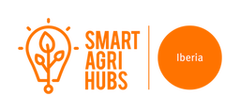

Regional Cluster
Iberia
Sector
Livestock
End user
Small and mid-sized farms
Product
Technical-economic information shown in a single device for making the most eficient and profitable decisions.
Contact
Manuel López Luaces
Partners
Agacal (RTD) in Spain
Seragro S. Coop. Galega in Spain
Elmega SL in Spain
Monet Technologia e Innovacion SL in Spain
Alltech Spain
3EDATA in Spain
University of Santiago de Compostela (Spain)
Fundacion Centro Tecnoloxico de Telecomunicacions de Galicia in Spain
Digital Innovation Hub for the Galician Agrifood Sector in Spain
Something funny/interesting
Our FIE brings together a heterogeneous team of eight partners from the same region that had never partnered before as a group. We have five SMEs, each of them offering solutions to different problems in farms, and we also have three Competence Centers, each bringing a different flavour of expertise. If there is a regional version of SmartAgriHubs, that must be our FIE 23! There have been some challenges to get this thing started, but the experience and lessons learned will be very useful for similar experiences in the future.
